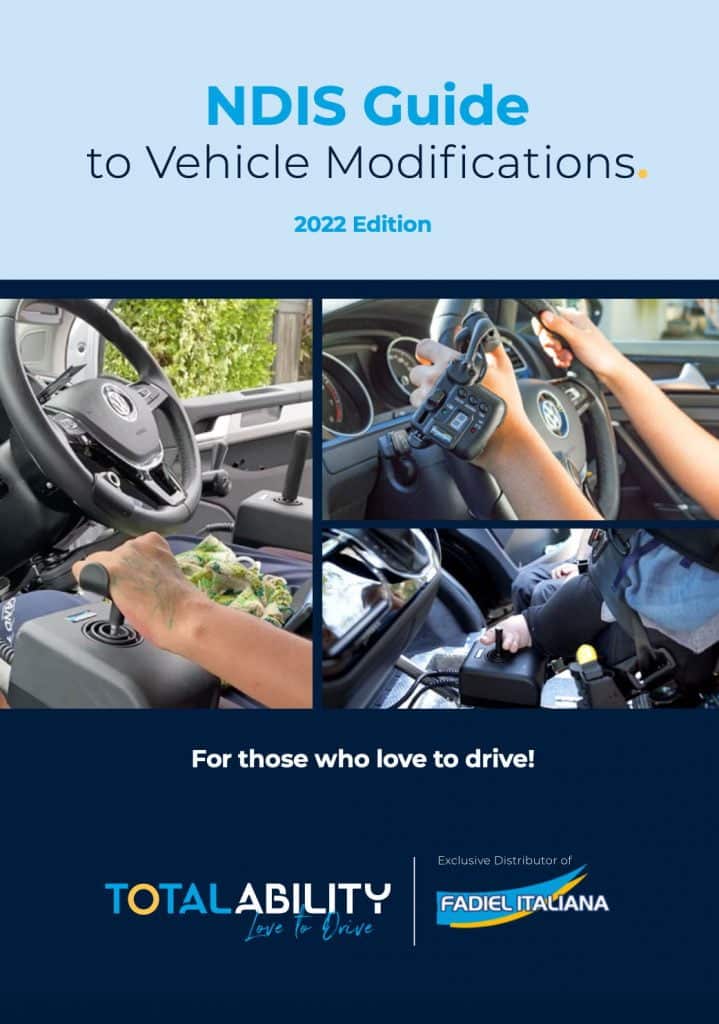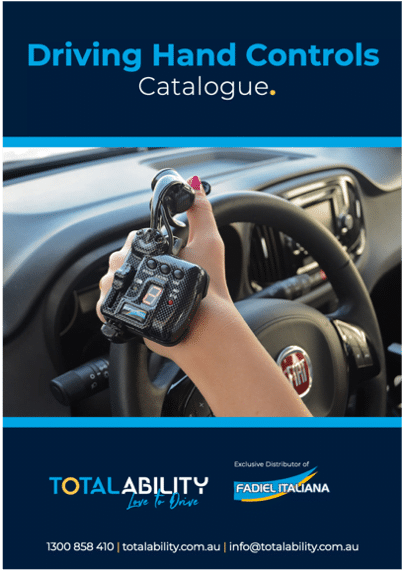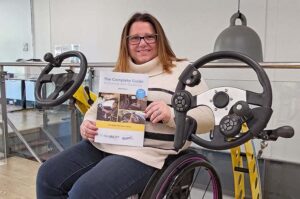
Why It Is Essential to Trial a Variety of Hand Controls
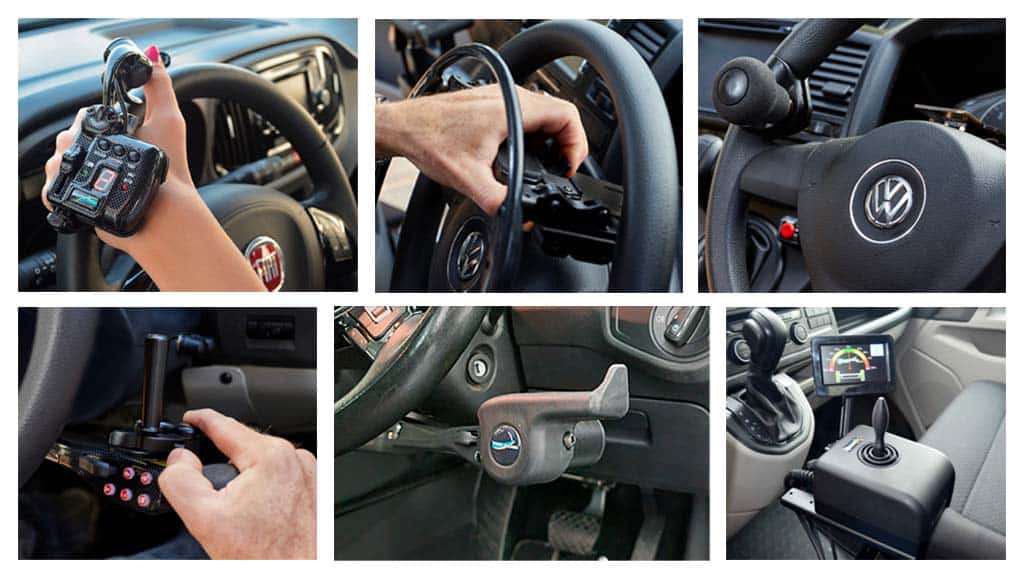
A summary of what you need to know about testing the full range of available hand controls.
If there’s one thing we’ve learned since opening our doors in 2011, it’s that there is no “one size fits all” approach to driving with disability.
Each person has unique strengths, preferences, and ability. So, when you are looking at vehicle modifications and assistive technology for driving, it’s essential to consider the full range of available options.
This principle applies to every aspect of equipment for driving with disability. But it’s especially important for hand controls.
Let’s explore why.
Reasons to Test Different Hand Controls
Firstly, if you plan to apply for funding through the NDIS for vehicle modifications, testing different hand controls is a mandatory part of the application process when moving to hand controls for the first time, or when there are changes in functionality that require a reassessment.
You will need to demonstrate that you have sought professional input to trial a variety of options, ruling out those which are unsuitable and highlighting the most appropriate products.
However, even if you aren’t going through the NDIS, there are several good reasons to test different hand controls, such as:
- Identifying ergonomic features that enable maximum driving ability, independence and enjoyment;
- Education on the full range of peripheral items to help with driving, for example, push button start, voice control and visual aids;
- Optimising independent access to the vehicle, by considering factors like leg space, seating configuration, and charging requirements;
- Learning capabilities and personal preference;
- Ensuring that the chosen modifications and equipment will be viable in the medium to long-term.
Overall, testing different hand controls gives a person with disability the best chance of being set up to maximise their driving ability in the present, while also being adaptable to foreseeable changes in functional ability going forward.
This future focused view enables a more thorough and thoughtful assessment of the cost effectiveness and value for money of hand controls.
Potential future costs (e.g. reassessment or moving controls to a new vehicle) can be factored into the decision, not just what the cheapest option is right now.
How to Trial Hand Controls
Anyone going through the NDIS process will need to work with a Driver Trained Occupational Therapist (DTOT) and Specialist Driving Instructor (SDI) to test different hand controls (see more about the key professionals involved in learning to drive with disability here).
In practice, the process is similar whether or not you are applying to the NDIS. In most cases, it’s not likely to be viable on a practical or legal level for a person with disability to trial and install vehicle modifications without professional assistance.
After gaining medical clearance to drive, the first step is to work with a DTOT for an assessment.
Taking into account ergonomics, individual capabilities and personal preference, the DTOT will make suggestions on initial hand controls to trial.
You will then have the opportunity to test these in a vehicle under real-world driving conditions, with an SDI.
Following this trial, you, the SDI and the DTOT will work together to evaluate what went well, what might not have been a great fit and whether any additional equipment needs to be tested.
Depending on your situation, this assessment and testing phase could take several months.
Remember, the goal is to get the decision right the first time, so it’s worth being thorough before making a final call.
We’ll give a few examples from our range of hand controls to highlight considerations in the assessment phase.
Different Options for Hand Controls
The range of hand controls for driving with disability available in Australia has gone through quite an evolution over the past decade.
Around 10 years ago, the only options available to customers were mechanical “push/pull” devices that are physically linked to the original accelerator and brake pedals in the car.
While there are some variations, these controls generally achieve acceleration and braking through pushing and pulling motions on a single handle or lever.
As technology advanced, it became more common for acceleration to be achieved electronically (all of Total Ability’s accelerators are now electronic).
Mechanical hand controls are still a reasonable choice for some people, but for many, the increased range of products and flexibility available with an electronic control best suits their needs.
To give you an idea of the different options you might wish to trial, here is an overview of selected products from our range of hand controls, organised according to the dexterity and strength required for their use.
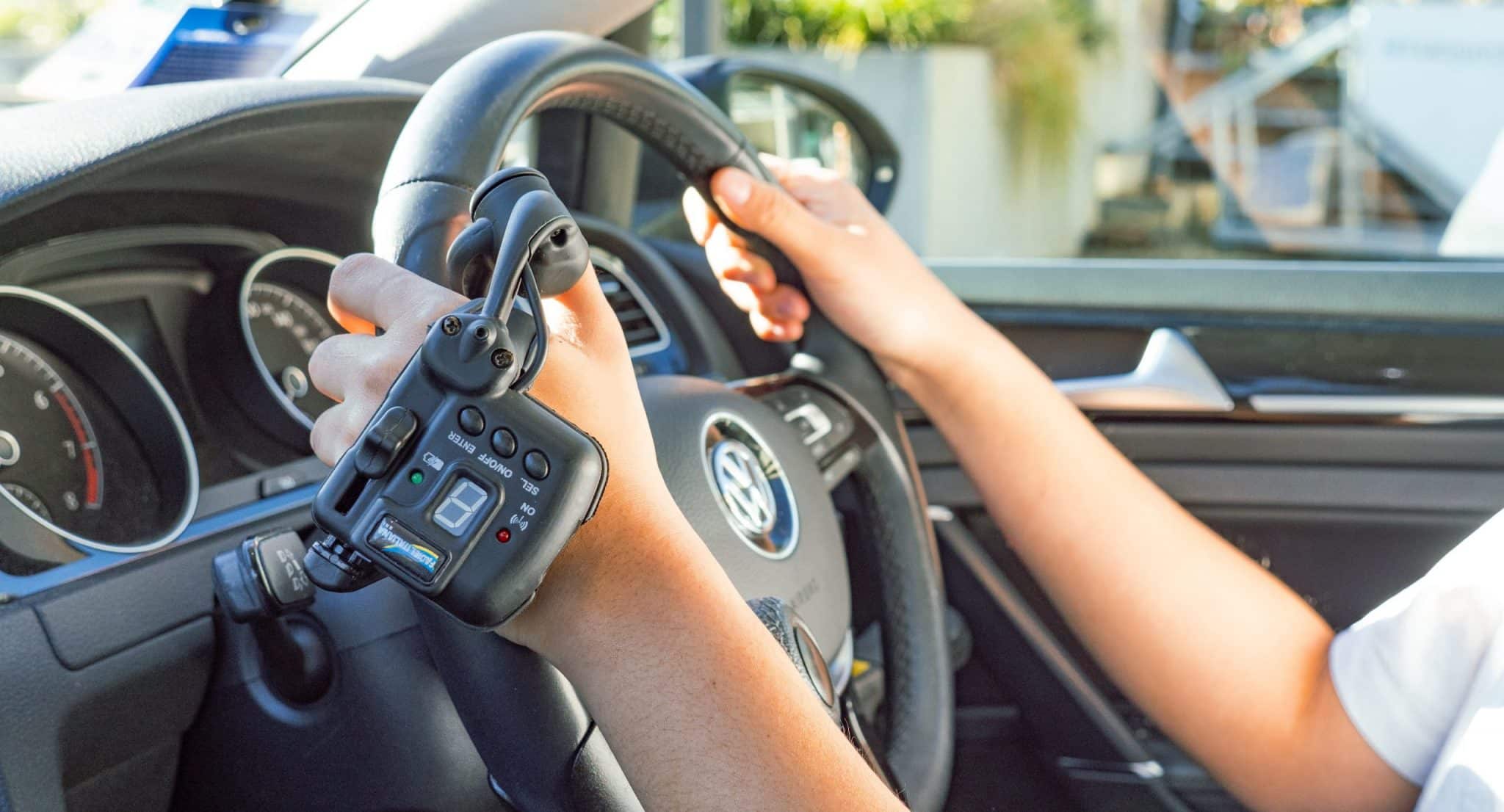
People With Dexterity
We recommend that everyone with adequate dexterity trial our Satellite Accelerator, particularly when first moving from regular foot control to hand control.
It is the most natural mental assimilation of regular driving with both hands on the wheel and the most ergonomic hand control long-term.
This innovative hand control is worn like a glove, allowing the driver to maintain both hands on the steering wheel while driving, with acceleration being achieved through a light press of the thumb.
The Satellite Accelerator is generally paired with our Brake Lever.
Another option for people with adequate dexterity is the Trigger Accelerator and Brake Lever.
Acceleration with this control is achieved with a light pull on the trigger, while pushing the lever activates the brake.
The Trigger Accelerator and Brake Lever comes in left and right-handed versions, with a customisable trigger and end knob to ensure the best ergonomic fit.
The light action of the trigger eliminates fatigue, and driving with two hands on the steering wheel is possible by controlling the accelerator trigger with the little finger.
For combined acceleration and braking, the Easy Drive is designed to be fitted on the left hand side of the driver’s seat.
Depending on the driver’s ability and preference, the Easy Drive can be fitted with a push/pull or push/radial handle. Both utilise a forward motion to brake and a pull or turn of the wrist to accelerate.
Finally, after considering different options, some people with disability choose mechanical hand controls.
These remain a good option for people with adequate dexterity and strength, when there is no expected future deterioration in functional ability. However, because of the extra effort required to use them, mechanical hand controls can cause wear and tear on shoulders and wrists, so they are becoming less and less suitable given the alternatives available.
Controls for Limited Dexterity
Designed for people with limited dexterity, the Ergonomic Radial Accelerator and Brake Lever can be configured with a palm or lever grip handle.
Both handles can be customised in terms of weight and rotation. A modest push activates the brake, while acceleration requires only a gentle turn of the hand.
Because the hand rests on top of the control during use, operating the Ergonomic Radial places almost no stress on the shoulder.
The T-Radial Accelerator and Brake Lever is a hand control made specifically with the needs of people with quadriplegia in mind.
The T-bar handle is fully adjustable for ideal ergonomic placement, ensuring extremely balanced acceleration through corners and over bumpy surfaces.
This control has a high level of sensitivity when braking and can be incorporated with voice command for auxiliary controls (indicators, lights, horn, wipers).
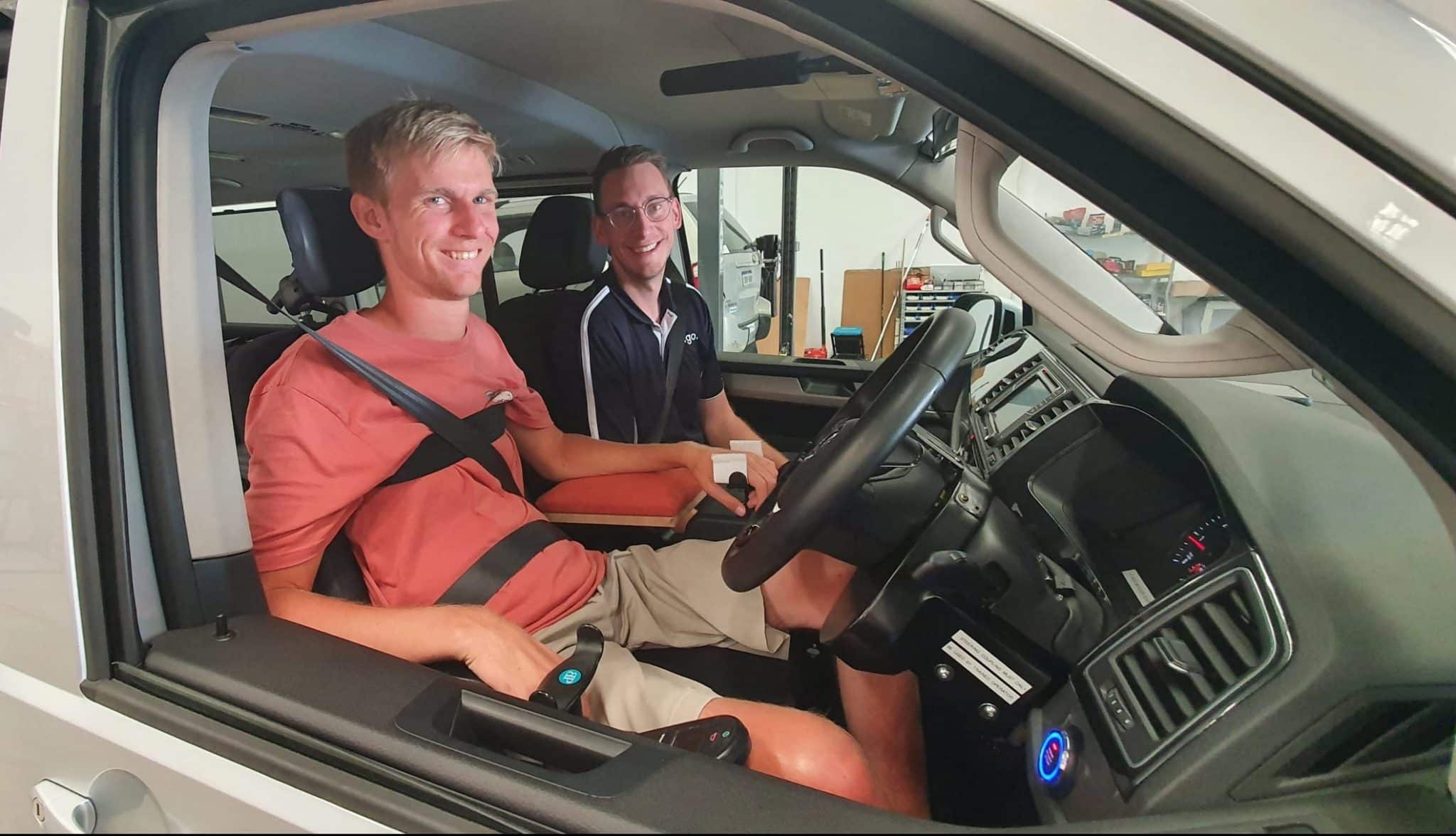
Limited Strength and Dexterity
Where both strength and dexterity are limited, some of our high-level controls like the Joystick, Mini Wheel Steering, or Freedom Brake and Accelerator are options that should be tested.
Each control is specially designed for people with very limited limb function and strength.
They offer complete flexibility in terms of mounting location and programming options, plus they are available in various configurations.
Functions for these high-tech hand controls may be all in one (brake, acceleration and steering), or split between controls. For example, a driver may use a combination of a joystick and mini wheel steering.
The complexity and cost of these high-tech hand controls can limit the availability to trial the various types.
Total Ability has invested in 5 high-level assessment vans placed around Australia to enable people with disability in each State to gain access to the range of Fadiel hand controls.
These modifications enable a person who drives from wheelchair to trial, be assessed and have driving lessons. Contact us on 1300 858 410 or at info@totalability.com.au to find out more about booking a van.
Learning New Controls Can Take Time
One of the main reasons it’s so important to work with experienced professionals when testing hand controls is that they take time to learn!
No one feels comfortable when they first trial driving hand controls. However, by working with a Specialist Driving Instructor, you can take your time to learn how to use a variety of suitable controls to see which is likely to be the best long-term fit.
Remember, it’s not just the initial ease of use that needs to be considered.
Ongoing stress on the shoulder, anticipated driving distances and future functional ability need to be taken into account (both maintaining current function and expected deterioration).
In some cases, learning to use a hand control that might not seem as intuitive or comfortable at first, may in fact offer the best long-term option.
An example would be a person who initially seems restricted to hand controls for people with limited strength and dexterity. However, with some strengthening exercises in the gym and additional lessons they might be able to use a wider variety of controls.
Whatever your situation, a Driver Trained Occupational Therapist can provide expert advice on your options for hand controls, and then collaborate with an instructor to help you learn how to use them.
The Power of Knowledge
The best way to ensure that you get the hand controls for maximum driving freedom and enjoyment is to equip yourself with knowledge.
The more you know about hand controls, the greater your capacity will be to actively participate in the assessment and testing process with the DTOT and SDI.
By understanding the range of options for hand controls and spending time thinking about your personal goals, purpose and preferences around driving, you will be able to proactively work with these key professionals to learn to drive with disability and get the best possible outcome for your circumstances.
To help you on this journey, we’ve compiled everything you need to know about driving with disability into our FREE Complete Guide to Driving with Disability.
This Guide covers:
- Initial Assessment
- Understanding the Plan
- Assistive Technology and the NDIS
- State Motoring Authorities
- Assessment Considerations
- Quotes and Evidence
- High-cost Vehicle Modifications
- Complete the NDIS Application
- After Lodgement
- Checklists
Driving Hand Controls Catalogue includes:
- Our complete range of driving hand controls
- For each control, the disabilities and conditions they are suitable for
- A comparison chart outlining the benefits and features of the various types of hand controls
- The history of Fadiel Italiana high level modification driving systems


